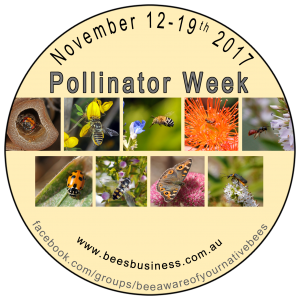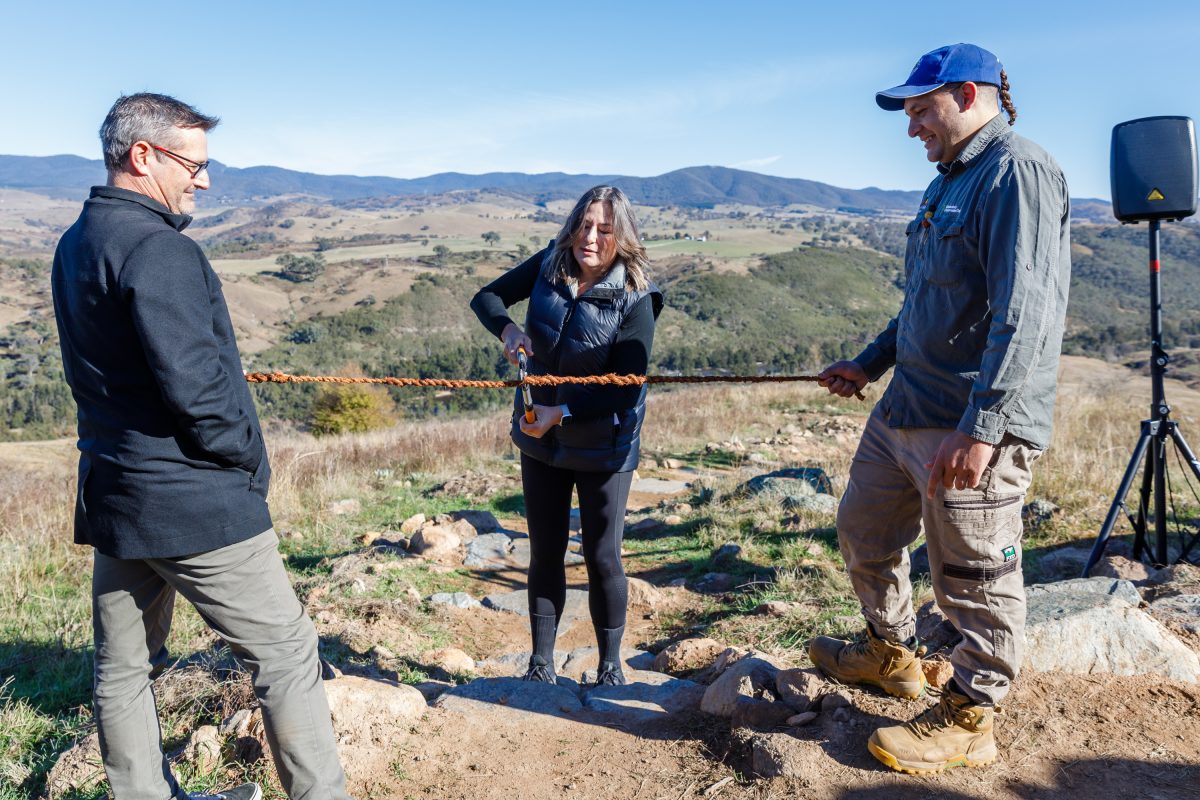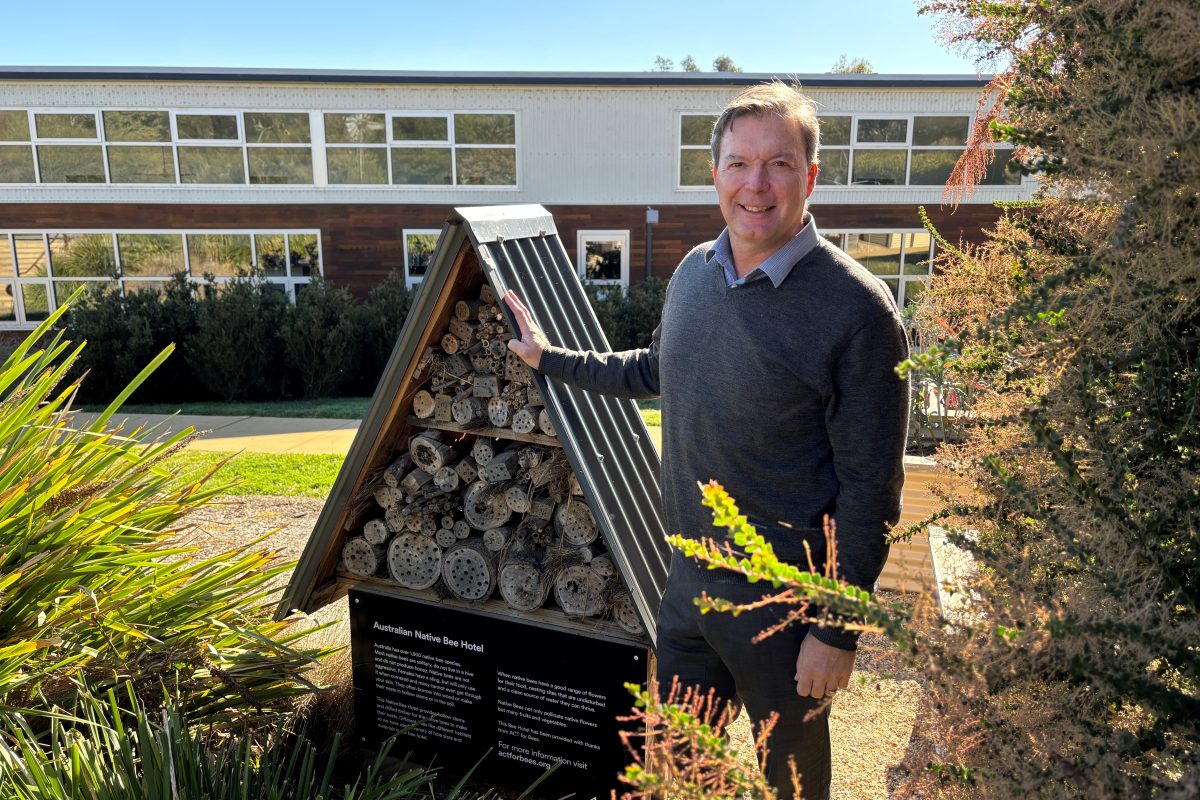Australian Pollinator Week November 12th – 19th 2017 – GET INVOLVED!
 Article by Julie Armstrong – ACT for Bees
Article by Julie Armstrong – ACT for Bees
To celebrate Australian Pollinator Week we are inviting you to become involved by taking part in The Wild Pollinator Count and contribute to wild pollinator conservation in Australia. “Pollinators drive biodiversity, and over 75% of the world’s flowering plants rely on insect pollinators to reproduce. Pollinators provide these important ecosystem services in the natural landscapes as well as within agricultural/horticultural and urban environments. The world is suffering from major pollinator declines, but through education and events such as Pollinator Week we can bring these usually-unnoticed insects to the forefront of peoples’ thoughts, with the goal of supporting and protecting their populations.” Bees Business
“Australia has lots of wild pollinator insects that are often overlooked. European honey bees get a lot of attention because they are an adaptable, generalist forager, which means they are happy to visit almost any flower, in most climate zones. They are also a social species, so their hives are easy to domesticate and manage.
However, many native insects also contribute to pollination in crops and gardens all around the country. We still need to do a lot of research to identify all our pollinator insect species, understand their ecology and how they are affected by human activities. So far, we know that Australia has around 2,000 native bee species, all of which are important pollinators. We also know there are a couple of thousand butterfly, wasp, fly, moth, beetle, thrips and ant species, some of which are documented pollinators. Unfortunately, we don’t have a lot of information on the ecology of many of these insects, what flowers they pollinate, or where they are found.
We invite you to count wild pollinators in your local environment and help us build a database on wild pollinator activity. You can join in by watching any flowering plant for just ten minutes sometime in our count week.
• You don’t need to be an insect expert.
• You don’t need fancy gear.
• You may be surprised by what you see!
Find out how to count pollinators, identify the insects you see and submit your observations through the links at the top of the page. You can also download our Run Your Own Count kit and organise to count with a group.”
Wild Pollinator Count Australian Pollinator Week also has many resources on how to build a pollinator habitat garden, building a pollinator nest and a good range of resources on Australian native bees. There are great tips for activities for children as well.
ACT for Bees has teamed up with the Australian National Botanic Gardens to do a Wild Pollinator Count in the gardens which is sure to be an ideal environment to spot a wonderful range of species.
We are very excited to be taking guided tours on Tuesday 14th, Thursday 16th , Saturday 18th at 10 am and 12 noon for anyone who would like to join us. If you’re in the gardens and want to do the count yourself, drop into the Information Centre and pick up the ‘Wild Pollinator Count’ resources and enjoy exploring the wonderful range of flowers and pollinators which are around now. Happy spotting!


